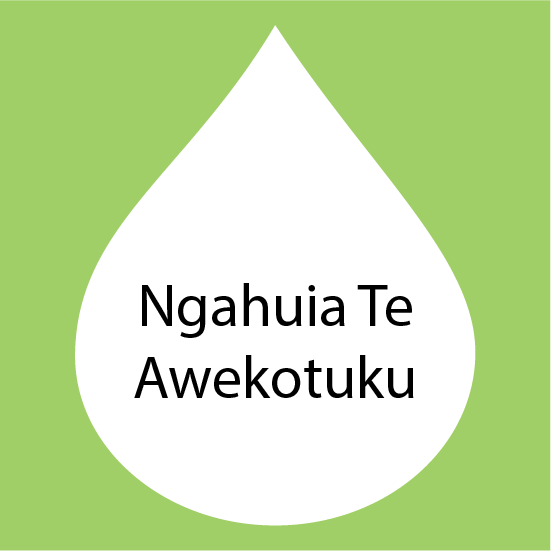Ngahuia Te Awekotuku
Title
Ngahuia Te Awekotuku
Birthplace
Te Arawa, Tūhoe, and Waikato Descent, Aotearoa
Primary Sources
Te Awekotuku, N., Campbell, D., Pōhio N and Tamarapa, A. (Eds.) (2021). Te Puna Waiora: The Distinguished Weavers of Te Kāhui Whiritoi. Christchurch Art Gallery Te Puna o Waiwhetü. https://aaanz.info/te-puna-waiora-the-distinguished-weavers-of-te-kahui-whiritoi/
Te Awekotuku, N. (2020). Mata Ora: Chiseling the Living Face – Dimensions of Maori Tattoo. In Edwards, E., Gosden, C., & Phillips, R. (Eds.), Sensible Objects: Colonialism, Museums and Material Culture (1st ed.). Routledge. https://doi.org/10.4324/9781003086611
Te Awekotuku, N. (2017). Tahuri: A Limited Edition. PangoCatPress.
Te Awekotuku, N.(2007) Mau Moko: The World of Māori Tattoo. Penguin Viking. ISBN 9780670045617.
Te Awekotuku, N. (1999). Maori women and research: Researching ourselves. In N. Robertson (Ed.), Maori and psychology: Research and practice (full conference proceedings), 59–66. Māori and Psychology Research Unit, University of Waikato. Accessed January 10, 2022. https://hdl.handle.net/10289/882
Te Awekotuku, N. (1991). Mana wahine Maori: Selected writings on Māori women’s art, culture, and politics. New Women’s Press. ISBN 0908652631.
Te Awekotuku, N. (2020). Mata Ora: Chiseling the Living Face – Dimensions of Maori Tattoo. In Edwards, E., Gosden, C., & Phillips, R. (Eds.), Sensible Objects: Colonialism, Museums and Material Culture (1st ed.). Routledge. https://doi.org/10.4324/9781003086611
Te Awekotuku, N. (2017). Tahuri: A Limited Edition. PangoCatPress.
Te Awekotuku, N.(2007) Mau Moko: The World of Māori Tattoo. Penguin Viking. ISBN 9780670045617.
Te Awekotuku, N. (2003). Ruahine: mythic women. Huia Publishers.
Te Awekotuku, N. (1999). Maori women and research: Researching ourselves. In N. Robertson (Ed.), Maori and psychology: Research and practice (full conference proceedings), 59–66. Māori and Psychology Research Unit, University of Waikato. Accessed January 10, 2022. https://hdl.handle.net/10289/882
Te Awekotuku, N. (1991). Mana wahine Maori: Selected writings on Māori women’s art, culture, and politics. New Women’s Press. ISBN 0908652631.
Secondary Sources
Bach, L., Luh, K., & Schult, U. (2011). “The samenesses and the differences”: Representations of Māori femininities and sexualities in Ngahuia Te Awekotuku’s short story collections Tahuri (1989) and Ruahine - Mythic women (2003). Women’s Studies Journal, 25(2), 26–42. https://www.proquest.com/scholarly-journals/samenesses-differences-representations-maori/docview/925762489/se-2
Morrison, T., Spivak, G., & Te Awekotuku, N. (2005). Guest column: Roundtable on the future of the humanities in a fragmented world. PMLA/Publications of the Modern Language Association of America, 120(3), 715–723. https://doi.org/10.1632/003081205X63822
Nikora, L.W., Karapu, R., Hickey, H. & Te Awekotuku, N. (2004). Disabled Māori and disability support options. A report prepared for the Ministry of Health, Hamilton Office. Māori and Psychology Research Unit, University of Waikato. Accessed August 3, 2022. https://hdl.handle.net/10289/460
Nikora, L. W., Rua, M., & Te Awekotuku, N. (2007). Renewal and resistance: Moko in contemporary New Zealand. Journal of Community & Applied Social Psychology, 17(6), 477-489. https://doi.org/10.1002/casp.942
Morrison, T., Spivak, G., & Te Awekotuku, N. (2005). Guest column: Roundtable on the future of the humanities in a fragmented world. PMLA/Publications of the Modern Language Association of America, 120(3), 715–723. https://doi.org/10.1632/003081205X63822
Nikora, L.W., Karapu, R., Hickey, H. & Te Awekotuku, N. (2004). Disabled Māori and disability support options. A report prepared for the Ministry of Health, Hamilton Office. Māori and Psychology Research Unit, University of Waikato. Accessed August 3, 2022. https://hdl.handle.net/10289/460
Extra Resources
Ngahuia te Awekotuku, 17 August 2018, New Zealand History. Accessed August 3, 2022. https://nzhistory.govt.nz/media/video/ngahuia-te-awekotuku
Mason, N. (2008). Turuki turuki! paneke paneke! : when Māori art became contemporary, contributions from Jonathan Mane-Wheoki and Ngahuia Te Awekotuku. Auckland Art Gallery Toi o Tamaki. ISBN 9780864632746.
Mason, N. (2008). Turuki turuki! paneke paneke! : when Māori art became contemporary, contributions from Jonathan Mane-Wheoki and Ngahuia Te Awekotuku. Auckland Art Gallery Toi o Tamaki. ISBN 9780864632746.
Collection
Citation
“Ngahuia Te Awekotuku,” Decoloniality, First Nations Thinkers and thought and practices from the Global South, accessed December 6, 2025, https://omeka.cloud.unimelb.edu.au/decoloniality-and-thinkers-from-the-global-south/items/show/72.
